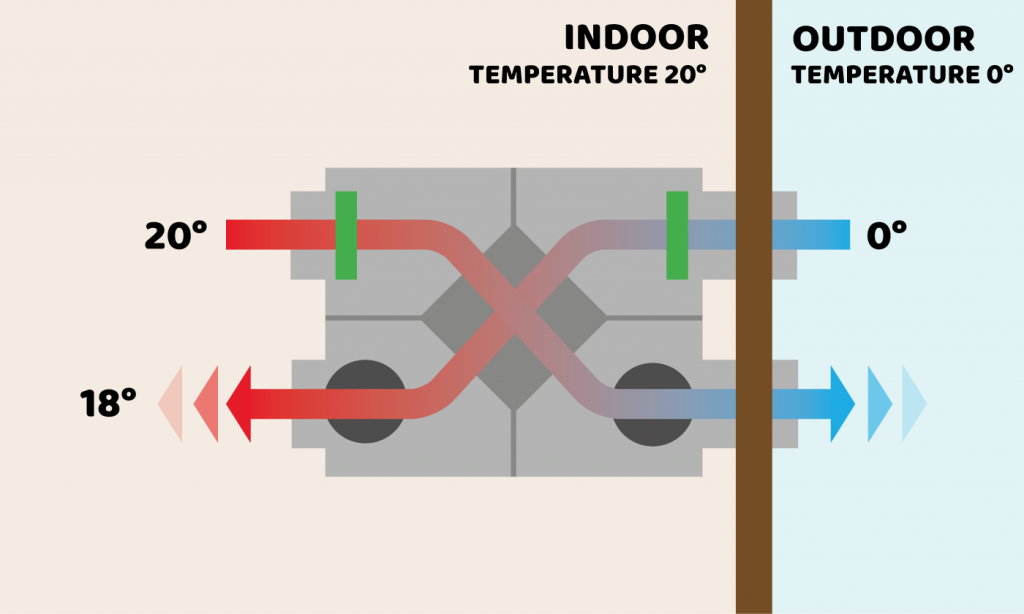Discovering the Advantages of Heat Recovery Ventilation for Energy Effectiveness in Residences
Heat Recovery Ventilation (HRV) systems use property owners a practical strategy to enhancing power efficiency. By reclaiming heat from outbound air, these systems can considerably reduce home heating and air conditioning costs. Furthermore, they supply a stable supply of fresh air, improving indoor air high quality and comfort degrees. As house owners think about sustainable alternatives, comprehending the nuances of HRV systems comes to be increasingly essential. What variables should one evaluate before making such an investment?
Recognizing Heat Recovery Ventilation Equipments

Just How HRV Improves Indoor Air High Quality

Energy Savings: The Economic Advantages of HRV
Taking full advantage of energy performance, heat recovery ventilation (HRV) systems offer considerable financial benefits for homeowners. By recovering and reusing heat from exhaust air, HRVs markedly lower heating & cooling expenses. This technology can lead to energy financial savings of approximately 30%, depending upon environment and usage patterns. House owners commonly why not try this out discover minimized energy bills shortly after installment, making HRVs a financially wise investment in time. Additionally, many regions offer rewards or rebates for energy-efficient upgrades, even more enhancing the economic allure. As energy rates remain to increase, the cost-effectiveness of HRVs becomes progressively clear. Overall, the consolidation of HRV systems not just promotes power performance however additionally contributes to long-lasting monetary savings for houses.
The Environmental Effect of Heat Recovery Ventilation
A considerable environmental benefit of heat recovery ventilation (HRV) systems depends on their capability to reduce overall energy usage. By redeeming warm from exhaust air and transferring it to incoming fresh air, HRV systems decrease the need for energy-intensive heating and cooling down approaches. This reduction in power demand adds to decrease greenhouse gas exhausts, as less nonrenewable fuel source is needed to preserve comfy interior temperatures. Furthermore, HRV systems improve interior air top quality by efficiently trading stagnant air with fresh exterior air, reducing reliance on mechanical cooling systems that can harm the atmosphere. On the whole, the implementation of HRV systems supports sustainable living practices and aligns with global initiatives to fight climate adjustment by advertising power efficiency in residential settings.
Selecting the Right HRV System for Your Home
How can house owners guarantee they select the ideal heat recovery ventilation (HRV) system for their demands? First, they should evaluate their home's dimension and design, as these elements affect airflow demands. Next off, examining the system's click to read effectiveness rankings is important, as greater rankings suggest better performance and power savings. Homeowners ought to also take into consideration setup and maintenance expenses, comparing various brand names and models for worth. Additionally, it's important to examine noise levels, as some systems run even more quietly than others. Consulting with heating and cooling professionals can supply tailored referrals based upon details home conditions. Finally, checking out individual reviews and service warranties can help in making an educated choice, making sure that the selected HRV system properly improves interior air high quality and power performance.
Often Asked Inquiries

Just how Frequently Should I Tidy or Preserve My HRV System?
The regularity of cleaning or keeping a heat healing air flow (HRV) system typically depends on use and ecological variables. Typically, it is a good idea to perform upkeep visit here every 6 months to ensure peak efficiency and air quality.

Can HRV Systems Help In Reducing Moisture Degrees Indoors?
HRV systems can efficiently reduce indoor moisture degrees by trading stagnant, moist air with fresh, drier air from outside. HRV Heat Recovery Ventilation. This procedure assists keep a well balanced interior environment, boosting comfort and protecting against moisture-related concerns
What Is the Life expectancy of a Normal HRV System?
The lifespan of a typical heat recovery ventilation (HRV) system differs, typically lasting between 10 to 15 years. Normal upkeep can extend its effectiveness and operational life, ensuring peak performance throughout its usage period.
Exist Any Kind Of Noise Concerns With HRV Systems?
Noise worries with HRV systems can arise, especially from follower procedure. Many modern systems are created to lessen audio levels, ensuring they operate silently while preserving performance, which addresses potential disruptions in living settings.
Can I Mount an HRV System Myself, or Do I Required a Specialist?
The specific contemplated whether to set up the heat recovery ventilation (HRV) system directly or work with an expert. Usually, while do it yourself setup is possible, experience warranties correct performance and compliance with local structure codes, improving system efficiency.